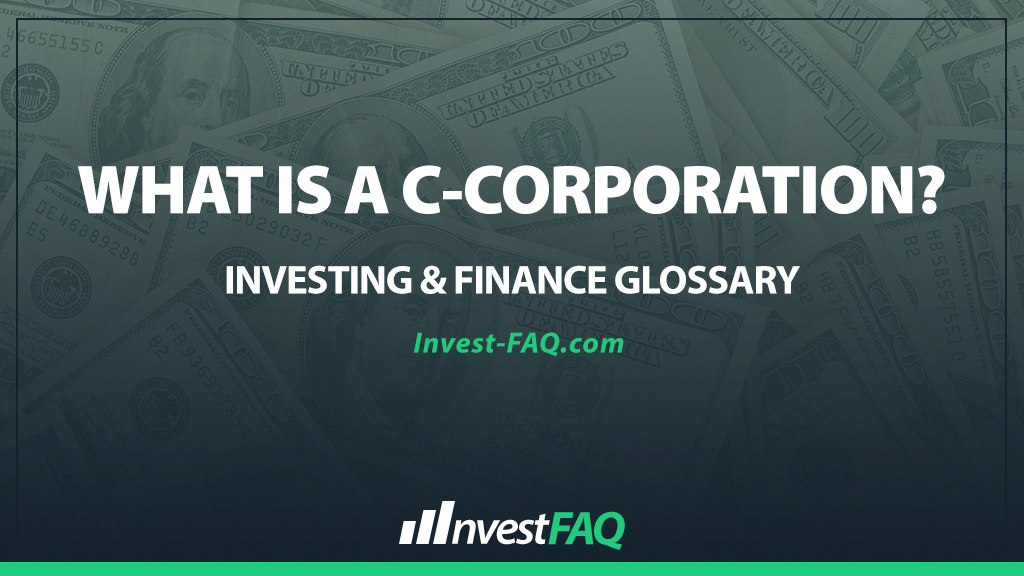
C-Corporation
Contents
A C-Corporation, often simply called a “C-Corp,” is a legal structure for a corporation in which the owners, or shareholders, are taxed separately from the entity. C-Corps are subject to corporate income tax on their profits, and any dividends paid to shareholders are also taxed at the individual level, leading to what is commonly referred to as “double taxation.”
C-Corporations are the most common type of corporation, especially among larger companies, due to their ability to attract investment through the issuance of publicly traded stock.
This structure provides limited liability protection to its owners, meaning shareholders are not personally responsible for the debts or liabilities of the corporation.
C-Corps can also retain earnings in the company for future growth, sell shares to raise capital, and offer stock options to employees.
Example of a C-Corporation
Let’s consider “Tech Innovate, Inc.,” a C-Corporation with a net income of $1 million for the fiscal year. The company decides to reinvest $600,000 back into the business for research and development, leaving $400,000 to be distributed as dividends to shareholders.
Corporate Income Tax: Assume the corporate tax rate is 21%. “Tech Innovate, Inc.” would pay $210,000 ($1 million * 21%) in corporate income taxes.
Dividend Distribution: The remaining after-tax income of $790,000 can be partly distributed as dividends, with $400,000 allocated for this purpose.
Double Taxation on Dividends: Shareholders receiving dividends are taxed at the qualified dividend rate, which let’s assume is 15% for this example, leading to an additional $60,000 ($400,000 * 15%) in taxes paid by the shareholders on their individual tax returns.
In this scenario, “Tech Innovate, Inc.” faces double taxation, first at the corporate level on its profits and again at the individual shareholder level on dividends.
The company’s ability to reinvest a significant portion of its earnings allows for future growth, but the distribution of dividends illustrates the additional tax burden placed on income returned to shareholders.
This example highlights the financial considerations C-Corporations must navigate, balancing reinvestment opportunities against shareholder expectations for returns on their investment.
Significance for Investing & Finance
The C-Corporation structure significantly impacts accounting practices and financial planning:
Financial Reporting: C-Corps are required to follow Generally Accepted Accounting Principles (GAAP) and often must undergo annual audits, requiring meticulous financial record-keeping and reporting.
Tax Planning: Effective tax planning is essential to manage the double taxation on profits and dividends, including strategies for reinvestment, dividend distribution, and tax-advantaged benefits planning.
Capital Raising: The ability to issue stock makes capital raising more flexible for C-Corps, but it also necessitates careful accounting for equity transactions and compliance with securities regulations.
In summary, a C-Corporation represents a widely used business structure that offers significant advantages in terms of raising capital and limiting shareholder liability.
However, it also imposes complex tax and reporting requirements, demanding careful financial management and planning to optimize the benefits while minimizing the drawbacks associated with double taxation.
FAQ
What distinguishes a C-Corporation from an S-Corporation in terms of tax treatment?
A C-Corporation is taxed separately from its owners, facing corporate income tax on its profits, whereas an S-Corporation’s profits are passed through to the shareholders and taxed at their individual income tax rates, avoiding the double taxation inherent to C-Corps.
How can a C-Corporation utilize retained earnings to benefit its growth strategy?
A C-Corporation can utilize retained earnings by reinvesting them back into the company for research and development, expansion, or other growth initiatives, leveraging this internal source of funding to fuel future success without incurring additional debt or diluting ownership through issuing more stock.
Double taxation for shareholders of a C-Corporation means that profits are taxed at both the corporate level and again as personal income when dividends are distributed, potentially reducing the overall return on investment for shareholders.
Can a C-Corporation convert to an S-Corporation if it meets certain criteria?
Yes, a C-Corporation can convert to an S-Corporation if it meets specific IRS criteria, including having no more than 100 shareholders and only one class of stock, allowing it to avoid double taxation while retaining benefits like limited liability.
